
El Plan Del Hoyo, El Salvador, Washed
- Regular price
- $20.00
- Sale price
- $20.00
- Regular price
-
- Unit price
- per
Yellow stone fruit, orange and black tea
COFFEE PROFILE
This Washed, SL28 lot from El Salvador has a transitioning sweetness, with notes of orange, yellow stone fruit and a herbal note similar to black tea.
| TASTES LIKE | Yellow stone fruit, orange and black tea |
| ROAST | Filter |
Story
Don Francisco de Sola is a visionary in sustainable coffee production, whose legacy continues to thrive through Monserrate, S.A. de C.V. He initially purchased the land in Chalchuapa, Santa Ana, El Salvador, in 1953, transforming it into a model of sustainable agriculture. His innovative approach combined agriculture and livestock, leading to an environmentally sustainable farm renowned for exceptional quality coffee.
The farm focuses on specialty coffee, particularly varieties like Geisha, Anacafé 14, and Pacamara. It serves as a hub for research and agricultural experimentation, collaborating with international institutions such as the Borlaug Institute and Nestlé. This partnership has led to the establishment of variety gardens on the farm, furthering its reputation as a centre for innovation. The farm employs a dedicated team, with additional workers during harvest, ensuring careful hand-picking and meticulous processing to maintain the high quality of their coffee. This is our first year working with him, and we're excited to partner with such a visionary producer.
| PRODUCER | Don Francisco de Sola |
| REGION | Chalchuapa, Santa Ana |
| VARIETAL | SL28 |
| PROCESS | Washed |
| ALTITUDE | 1750 masl |

Origin
Chalcuapa, Santa Ana, El Salvador
Chalchuapa, situated in the Santa Ana department of El Salvador, boasts a rich history intertwined with coffee production, a crucial element of the local economy and culture for over a century. Coffee cultivation in Chalchuapa began to flourish in the late 19th and early 20th centuries, significantly contributing to El Salvador's economic boom. Nestled within the Apaneca-Ilamatepec mountain range, Chalchuapa benefits from volcanic soil, high altitudes reaching 1,850 meters, and a favourable climate, creating ideal conditions for specialty coffee varieties such as Geisha and Pacamara.
Historically, Chalchuapa saw the establishment of large coffee estates, with farms like El Plan del Hoyo gaining recognition from the 1950s. By mid-20th century, Chalchuapa became a key player in El Salvador's coffee industry, one of the nation’s largest export sectors. Over time, the region adapted to global market changes, focusing on specialty coffee and sustainability, allowing local farms to excel in international competitions like the Cup of Excellence. Chalchuapa's coffee culture is deeply connected to its indigenous heritage, with significant archaeological sites and proximity to ancient Maya ruins, further enriching its agricultural and cultural legacy.
BREW GUIDE
How to get the best tasting cup
NOTE THESE ARE A STARTING POINT AND INDICATE A RANGE TO WORK WITHIN
| Age Best Used | 7-20 days after roast |
| Brew Parameters | Dose 20g in a V60 and add 300g of water in 5 pours of 60g at 90 degrees C. Start with a 60g bloom for 35 seconds then allow water to drain through each subsequent time before adding more water, aim to finish at 3:00. |
| Best Freeze Date | 7-12 days after roast |





